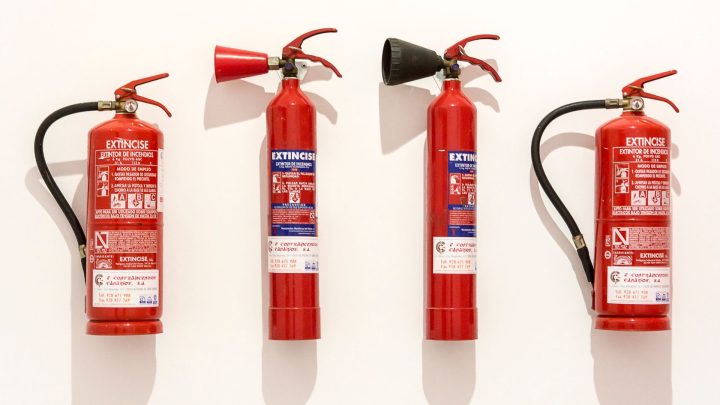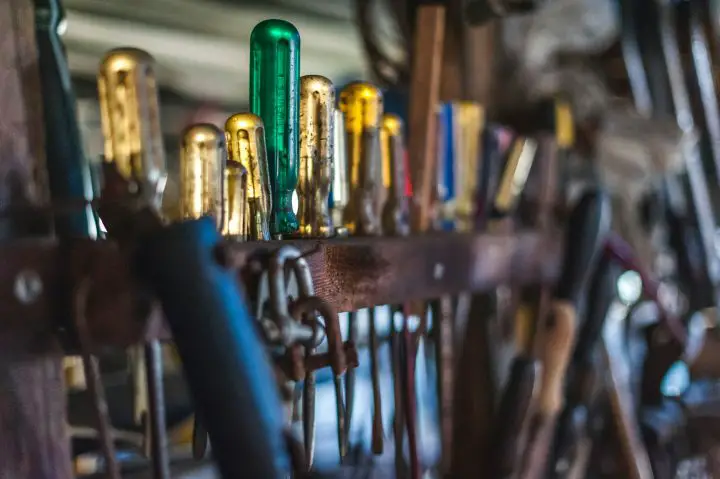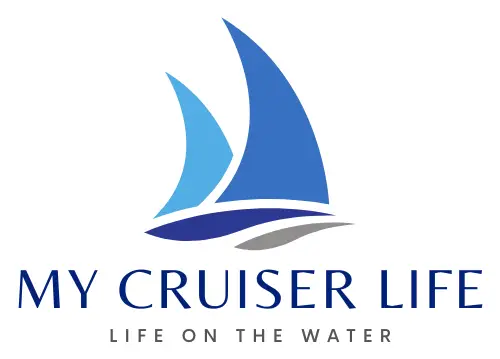Boat must haves can make the difference between creating lasting memories and facing a potential disaster on the water. The key isn’t just having gear—it’s having the right gear onboard before you leave the dock.
In 2020, the Coast Guard counted 5,265 recreational boating accidents resulting in 767 deaths, 3,191 injuries, and approximately $62.5 million of property damage. Here’s the kicker: 75% of fatal boating accident victims drowned, and of those drowning victims with reported life jacket usage, 86% were not wearing a life jacket. That tells you everything about why preparation matters.
Smart boating isn’t just about having equipment—it’s about having the essentials tailored to your style of boating. Whether you’re planning a sunset cruise with friends or heading out for some serious fishing, your boat needs to be equipped for both the enjoyable moments and the unexpected ones. We’ll walk through everything from the Coast Guard-required safety basics to the comfort items that’ll make your time on the water infinitely better.
Think of this as your master checklist, organized into categories that matter. Safety gear keeps you alive, navigation tools get you where you’re going (and back), communication equipment connects you to help when needed, and comfort essentials make the whole experience enjoyable. Plus, we’ll cover the maintenance tools that keep you moving and the fun recreational gear that turns a boat ride into an adventure.

Table of Contents
- Safety Gear
- Navigation Tools
- Communication Equipment
- Comfort Essentials
- Maintenance Tools
- Fishing & Recreation Gear
- Storage & Organization
- Your Boat, Your Adventure—But Always Be Prepared
- FAQs
Safety Gear
Personal Flotation Devices (PFDs)
Let’s start with the non-negotiables. All boats under 40 feet must carry specific US Coast Guard-required safety equipment, including PFDs, fire extinguishers, and visual distress signals. However, what really matters is that you need one Coast Guard-approved PFD for every person on your boat, and it must be the right size and readily accessible.
Boats sixteen feet or longer must also carry one Type IV throwable device, like a ring buoy or square cushion. Don’t just stuff these in a locker somewhere—when someone goes overboard, you’ve got seconds to react, not minutes to dig through storage.
Modern PFDs aren’t the bulky orange life preservers your grandfather used. Today’s options include comfortable inflatable vests that won’t cramp your style but will absolutely save your life. The key is getting everyone to actually wear them. Make it easy by choosing PFDs that people want to put on.
Fire Extinguishers
At least one B-1 type Coast Guard-approved hand portable fire extinguisher is required for most motorboats. The “B” classification means it’s designed for flammable liquids like gasoline—exactly what you need on a boat.
Your fire extinguisher needs to be mounted where you can grab it quickly, not buried under a pile of life jackets. Check the pressure gauge regularly and know how to use it before you need it. In a fire emergency, you won’t have time to read the instructions.
Here’s a pro tip: if you’ve got an enclosed engine compartment, enclosed living spaces, or permanent fuel tanks, you definitely need that fire extinguisher. Outboard boats under 26 feet might get a pass if they’re built to prevent gas fumes from accumulating, but why take the chance?
Visual Distress Signals
Must carry approved visual distress signals approved for daytime and nighttime use if you’re operating in coastal waters. This typically means flares, and they’re not optional—they’re your beacon to rescue when everything else fails.
For pyrotechnic devices (handheld or aerial red flares, floating or handheld orange smoke, and launchers for aerial red meteors or parachute flares), a minimum of 3 is required. Check those expiration dates religiously—expired flares might not fire when you desperately need them to.
Non-pyrotechnic alternatives include an orange distress flag for daytime and an electric SOS signal light for nighttime use. These don’t expire like flares, making them a practical backup option for many boaters.
Sound-Producing Devices
Every boat needs a way to make noise—horn, whistle, bell, whatever works. Sound-producing devices (bell, horn whistle) are recommended but not required on boats less than 40 feet, but you must have some way to make an audible sound for navigation in fog, at night, or when signaling other vessels.
Think beyond just meeting the requirements. A good marine air horn can alert other boaters to your presence when visibility is poor or help you communicate your intentions when maneuvering in tight spaces.
Related: What Piece of Equipment on a Boat is Most Important in Preventing Propeller Strike Injuries?
Navigation Tools
GPS and Chartplotters
Your smartphone’s GPS is great for finding restaurants, but marine navigation demands something more robust. In 2025, advancements like multi-constellation GNSS, touchscreen chartplotters, and AIS integration have transformed how small boat owners navigate with confidence and safety.
Modern marine GPS units support multiple satellite systems—GPS from the US, Galileo from Europe, GLONASS from Russia, and BeiDou from China. More satellites mean better accuracy, especially in challenging conditions or near tall structures that can block signals.
GNSS includes GPS (USA), Galileo (EU), GLONASS (Russia), and BeiDou (China). The more systems supported, the more accurate your positioning. Popular options like the Garmin GPSMAP series or Raymarine Axiom+ offer user-friendly touchscreens with preloaded charts and wireless connectivity.
Marine Charts
Having a GPS is only half the equation—you need current, detailed charts to make it useful. Navionics is a part of our best GPS app list because it has many of the same features you would expect from the competitors, offering extensive coverage and regular updates.
Paper charts are still valuable as backups, but digital charts offer real-time updates, depth contours, and the ability to overlay weather information. Services like Navionics, C-MAP, or Garmin BlueChart provide detailed coverage of US waters with regular updates for new hazards or channel changes.
Don’t forget about chart updates—waterways change, new hazards appear, and navigation aids get moved. Wavve Boating, iNavX, and Navionics are known for their extensive chart coverage and provide access to both official and community-updated information.
Compass
Even in our GPS-dependent world, a reliable magnetic compass remains essential backup navigation equipment. Electronics can fail, batteries die, and satellites sometimes get blocked, but a quality marine compass keeps working.
Mount your compass where it’s easily visible from the helm and away from metal objects or electronics that could affect its accuracy. A good compass should be fluid-damped to reduce needle swing in rough conditions and have a built-in light for night navigation.
Consider this your navigation insurance policy. When everything electronic fails, your compass and paper charts can still get you home safely.
Communication Equipment
VHF Marine Radio
Although not required in recreational boats under 65.5 feet long, a Very High Frequency (VHF) Marine Radio allows instant communication between your boat and other boats, marinas, bridges, and the United States Coast Guard (USCG).
Here’s why every boat should have one: VHF radios work when cell phones don’t. Your VHF radio is intended mainly for short-range communications, generally 5-10 miles, and at least 20 miles to a USCG station. That 20-mile range to Coast Guard stations could be the difference between a minor inconvenience and a major emergency.
FCC regulations require boaters with VHF radios to maintain a watch on either VHF channel 9 or channel 16 whenever the radio is turned on and not communicating with another station. Channel 16 is the international distress frequency—monitor it when you’re underway.
Digital Selective Calling (DSC)
Modern VHF radios come with DSC capability, which is like having a “mayday button” that automatically broadcasts your position and vessel information. DSC radios are VHF radios, but they have an added benefit of sending an automatic DISTRESS alert (on Channel 70) to the USCG and other nearby DSC and VHF-equipped vessels when activated.
To use DSC properly, you need a Maritime Mobile Service Identity (MMSI) number. You may obtain a free MMSI by contacting Boat US, SeaTow, or the US Power Squadrons. This nine-digit number identifies your vessel and enables automated distress calls.
Weather Radio Access
Most marine VHF radios include NOAA Weather Radio channels, giving you access to current forecasts, storm warnings, and marine weather conditions 24/7. This isn’t just convenient—it’s crucial for safe trip planning and avoiding dangerous weather.
Related: What Equipment Is Required to Be on a Boat Trailer
Comfort Essentials
Coolers and Food Storage
A quality marine cooler transforms your boating experience from survival mode to actual enjoyment. Look for features like thick insulation, secure latches that won’t pop open in rough water, and drain plugs for easy cleaning.
Yeti has become synonymous with premium marine coolers, but plenty of other brands offer excellent performance at various price points. The key is choosing a cooler sized appropriately for your typical trips and group size.
Think beyond just keeping drinks cold—proper food storage prevents spoilage and potential illness during longer trips. Separate coolers for drinks and food help maintain temperatures better since the drink cooler gets opened more frequently.
Shade and Weather Protection
A Bimini top isn’t just about comfort—it’s about safety. Extended sun exposure leads to dehydration, heat exhaustion, and poor decision-making. Quality shade lets you stay on the water longer and arrive back at the dock feeling great instead of fried.
Modern Bimini tops set up quickly and provide excellent UV protection. Look for marine-grade fabrics that resist fading and mildew. Many newer designs include side panels for wind protection and storage pockets for convenience.
Consider portable shade options too—pop-up canopies or umbrellas that can be moved around the boat as the sun changes position throughout the day.
Seating and Comfort Items
Comfortable seating makes the difference between guests who want to come back and guests who make excuses next time you invite them. Marine-specific cushions resist moisture and UV damage while providing the comfort that keeps everyone happy.
Portable boat chairs, cooler seats, and deck pads can supplement built-in seating and give everyone a comfortable spot. Look for quick-drying materials and secure attachment points to prevent items from becoming projectiles in rough conditions.
Maintenance Tools
Basic Tool Kit
Every boat needs a basic tool kit tailored to your vessel’s specific systems. Start with marine-grade tools that resist corrosion—regular tools will rust quickly in the salt air and high-humidity marine environment.
Essential tools include adjustable wrenches, screwdrivers (both Phillips and flathead in various sizes), pliers, electrical tape, zip ties, and a sharp knife. Store everything in a waterproof container or toolbox to prevent corrosion.
West Marine and other marine retailers offer pre-assembled boat tool kits, but building your own ensures you have tools specific to your boat’s equipment and your mechanical abilities.

Spare Parts and Fluids
Smart boaters carry spares for items that commonly fail. This includes spare bulbs for navigation lights, fuses for electrical systems, engine oil, and coolant if you have an inboard engine.
Keep a maintenance log noting what fluids your engine requires, filter part numbers, and service intervals. Having this information readily available makes emergency repairs or routine maintenance much easier.
Marine grease for fittings, penetrating oil for stuck parts, and basic gasket material can solve many common problems. The goal isn’t to carry everything—it’s to carry the right things for your boat and your typical boating activities.
Bilge Pump and Safety Equipment
Even if your boat has an electric bilge pump, a manual backup pump is essential. Electric pumps can fail due to dead batteries, clogged intake screens, or electrical problems. A manual pump keeps working when everything else quits.
It is suggested you carry additional safety equipment, such as: an Anchor with sufficient line/chain (at least five times water depth). A proper anchor setup isn’t just for stopping—it’s essential safety equipment that can keep you off rocks or out of traffic when your engine fails.
Fishing & Recreation Gear
Rod Holders and Fishing Equipment
If fishing is part of your boating plan, proper rod holders keep your gear organized and readily accessible. Flush-mount rod holders integrate cleanly with your boat’s design, while clamp-on versions offer flexibility for different fishing situations.
Quality brands like Shimano offer rod holders designed specifically for marine environments, with corrosion-resistant materials and secure mounting systems. Consider both storage and active fishing positions when planning your rod holder layout.
Water Sports Equipment
Tow ropes, water skis, wakeboards, and inflatables turn your boat into a floating entertainment center. When selecting tow ropes, match the rope’s rating to your boat’s power and the activity—different sports require different rope characteristics.
Safety equipment for water sports includes properly fitted life jackets for participants, a spotter in addition to the driver, and a bright flag to indicate when someone is in the water. Many states have specific requirements for water sports safety equipment.
Photography and Documentation
A waterproof action camera like a GoPro lets you capture memories without worrying about salt spray or accidental dunking. These cameras handle the marine environment better than phones and often produce better results in bright sunlight.
Consider mounting systems that let you capture different angles—from underwater shots of fish to aerial views from elevated mounts. Waterproof cases for phones provide backup photo capability while protecting expensive devices.
Storage & Organization
Dry Bags and Waterproof Storage
Not everything on your boat can get wet and survive. Dry bags protect phones, wallets, documents, spare clothes, and other essentials from spray, rain, and accidental submersion.
Quality dry bags use welded seams and roll-top closures to create truly waterproof protection. Sizes range from small pouches for phones to large duffels for extended cruise gear. Clear panels let you see the contents without opening the bag.
Tackle and Gear Organization
Plano tackle boxes set the standard for fishing gear organization, but the same principles apply to all boat gear. Divided storage keeps small items from becoming a jumbled mess and helps you find what you need quickly.
Pelican cases provide ultimate protection for expensive electronics, spare parts, or anything that absolutely cannot get wet or damaged. Their robust construction handles the abuse of marine environments while keeping contents bone dry.
General Storage Solutions
Mesh bags work great for items that need to drain—wet life jackets, snorkeling gear, or water toys. They prevent mildew while allowing air circulation for drying.
Under-seat storage bags maximize space utilization and keep frequently used items readily accessible. Look for bags designed specifically for marine use with UV-resistant materials and secure attachment systems.
Your Boat, Your Adventure—But Always Be Prepared
The best boat gear is what you actually have when you need it. Start with Coast Guard-required safety essentials and navigation basics, then customize based on your boating style. Day fishermen need different gear than weekend cruisers, and coastal boaters differ from lake explorers.
The boating lifestyle means freedom and adventure on the water. Proper equipment lets you focus on fun instead of worrying. Review this list, check your inventory, and fill gaps. The water doesn’t care about your experience or boat’s price—only whether you’re prepared. Create your personalized checklist and update it regularly for perfect days ahead.
FAQs
What to never bring on a boat?
Never bring glass containers (they shatter and create dangerous shards), candles or open flames (fire hazard), regular electronics without waterproof protection, non-marine batteries that can leak, or excessive amounts of gear that create clutter and safety hazards. Also, avoid bringing pets without proper life jackets, expired flares, or any items that aren’t secured and could become projectiles in rough water.
What is necessary to have on a boat?
Essential boat equipment includes Coast Guard-approved life jackets for every person, a fire extinguisher, visual distress signals (flares), a sound-producing device (horn/whistle), and navigation lights. You’ll also need a VHF radio for communication, GPS/charts for navigation, a first aid kit, an anchor with adequate line, and basic tools. These items ensure safety, legal compliance, and the ability to handle emergencies on the water.
What are some unique boat accessories?
Unique boat accessories include floating cup holders that follow your boat, LED underwater lights for nighttime ambiance, portable boat grills for onboard cooking, inflatable floating mats that create instant swim platforms, waterproof Bluetooth speakers, retractable shade systems, drink caddies that attach to railings, and portable washdown pumps. These accessories enhance comfort and entertainment while adding functionality to your boating experience.
